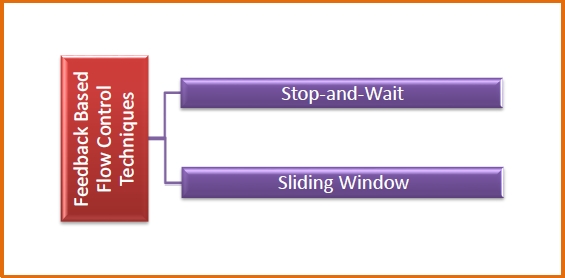
 Data Structure
Data Structure Networking
Networking RDBMS
RDBMS Operating System
Operating System Java
Java MS Excel
MS Excel iOS
iOS HTML
HTML CSS
CSS Android
Android Python
Python C Programming
C Programming C++
C++ C#
C# MongoDB
MongoDB MySQL
MySQL Javascript
Javascript PHP
PHP
- Selected Reading
- UPSC IAS Exams Notes
- Developer's Best Practices
- Questions and Answers
- Effective Resume Writing
- HR Interview Questions
- Computer Glossary
- Who is Who
Feedback-based flow control in data link layer
Flow control is a technique that allows two stations working at different speeds to communicate with each other. It is a set of measures taken to regulate the amount of data that a sender sends so that a fast sender does not overwhelm a slow receiver.
In data link layer, the sender continues to send frames only after it has received acknowledgments from the user for the previous frames. This is called feedback based flow control. Here, a restriction is imposed on the number of frames the sender can send before it waits for an acknowledgment from the receiver.
Feedback based Flow Control Techniques
Data link layer uses feedback based flow control mechanisms. There are two main techniques −

Stop and Wait
This protocol involves the following transitions −
The sender sends a frame and waits for acknowledgment.
Once the receiver receives the frame, it sends an acknowledgment frame back to the sender.
On receiving the acknowledgment frame, the sender understands that the receiver is ready to accept the next frame. So it sender the next frame in queue.
Sliding Window
This protocol improves the efficiency of stop and wait protocol by allowing multiple frames to be transmitted before receiving an acknowledgment.
The working principle of this protocol can be described as follows −
Both the sender and the receiver has finite sized buffers called windows. The sender and the receiver agrees upon the number of frames to be sent based upon the buffer size.
The sender sends multiple frames in a sequence, without waiting for acknowledgment. When its sending window is filled, it waits for acknowledgment. On receiving acknowledgment, it advances the window and transmits the next frames, according to the number of acknowledgments received.

